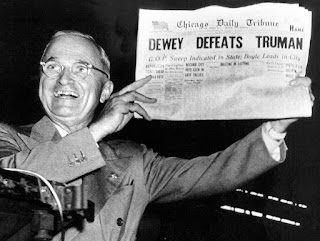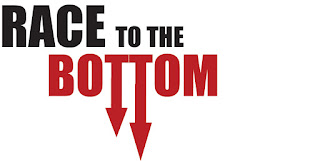From Los Angeles over to Davidson, North Carolina up to Oconomowoc, Wisconsin; from IT to corporate identity programs to copiers, back to IT, then managed print services, managed services, and back to Managed print Services.
What a checkered, varied and wonderful path. The journey continues.
I met Dave Westlake years ago when he was pitching his print security package - back then, nobody cared about security and printers. So he pivoted into asset management. His mapping tool created interest, and received traction in the IT realm, not the print world.
One day, Dave called me up asking for my advice. He was working with a client who wanted to build an MpS practice and was wondering about the hiring criteria for a MpS Practice Manager, inside a $300M VAR. After a 20 minute outline/oration, I simply stopped and said, “Dave, there is nobody out there with this level of experience in BOTH imaging and IT - except me."
One thing led to another, interviews conducted, offers made and accepted. Five months after our initial conversation, I was on my way from Ft. Meyers, Florida(87 degrees, sunny) to Oconomowoc, Wisconsin(12 degrees, cloudy) with a mission to first see if MpS made sense for the organization and then build a practice.
My consultations revealed this VAR, just like many others, did not hold print as a very high priority - for the organization or their clients. The sales people were accustomed to quoting million dollar hardware deals, not $4,500.00/month service contracts. The money was too little, the effort too involved.
So nine months into an engagement, I got the call into HR. “Print is not a strategic initiative of the company. Your position has been eliminated.” All righty then - nice to have met you all, it was a thrill helping you discover you didn’t need me or my expertise. Have a nice day.
Life.
While employed, I pitched Dave’s software to the VAR as a great way to help IT customers integrate different software systems onto a single screen, and was roundly rebuffed. “Oh, it’s just an asset management package…” The interpretation was incorrect, but for some reason, I didn’t waste time or breath on the argument.
They missed the point. I had customers begging me for a solution like Atlas. IT Directors from large financial institutions and one of the largest healthcare providers in the world were asking me for a way to integrate data from dozens of disparate databases.
Red flags fluttered in my toner-fused mind. I kept my mouth shut.
Days after being let go, I called Dave. Remember, if it weren’t for his phone call 14 months back, I wouldn’t be freezing in Oconomowoc, a gajillion miles from the Pacific. We decided to work together and double our efforts in the already proven niche, IT Lifecycle management. He may have felt pity or guilt - not sure.
But a funny thing happened on the way to the IT Department - we started to see Atlas as a natural choice for copier and print providers looking to pivot from MpS into IT. It’s easier to talk about tracking hardware than outsourcing the help desk or configuring hybrid BDR solutions.
Looking at the different mapping, assessment, ROI, proposal generating, and TCO tools left me exhausted and mystified - I would never purchase or inflict any of those tools on a sales team. We can’t get reps to type information into SalesForce or Oracle, how the heck are to expect them to operate and drive these behemoths?
I’ve managed and built MpS practices. I’ve created and helped institute managed services practices inside copier dealerships. In my own practice and in every other MpS organization I’ve been involved, the tools to sell, service and run the business is a large, complicated, hodgepodge of strung together software packages.
If by chance, an organization had moved forward with an integrated platform, a system that generates everything from TCO to before and after maps, the system is cluttered, complicated and heavy. Lot’s of dealers and most customers do not need or want to review a plethora of charts, graphs and spreadsheets crunching print related data.
I’ve heard them tell me so.
Atlas isn’t any of these things. I can conduct a simple walk through and interview, plot devices, capture machine data, document workflow involved, etc. right on my tablet or phone. MpS Practitioners can conduct assessments, utilize their wisdom and close more deals. It doesn’t matter if a DCA or thumb drive is utilized. Move forward with end user interviews, collect the data, plot devices, present your solution and close.
As a Practice Manager, I was always downloading invoice and toner costs out of EAutomate, collecting dispatch data from ConnectWise, merging Crystal reports and .CSV files in an Excel spreadsheet. After a few hours, I had a pretty good profit and loss presentation ready. Back then, I wondered if I would ever be able to boil all that data into a single screen, reflecting live data.
One can dream.
This is good stuff. Atlas helps MpS sales people, Practice Managers, Owner/Principles and customers managed and visualize the entire environment. What’s more, the system is designed to work inside existing workflows, organically optimizing processes and steps - not replacing existing tools in a ‘rip and replace’ manner.
For print specific providers, Atlas offers more than just toner/ink device management - out of the box, Atlas can track ALL assets, not just SNMP/MIB based. Manage the printers and copiers for 12 months, then move the conversation to IT Lifecycle management of PC’s, monitors, and phones. That’s just one
I’ve evaluated all the tools even working with some few know exist. I like simplicity. I like low overhead. I like tools that are implements, not replacements for creativity and thought.
That’s why I liked Printelligent. That’s why I picked Preo/Printelligence back in 2011 and promoted PrinterLogic in 2014 - simple, effective, relevant. I’m looking forward to evangelizing Atlas as an easy to use, scalable tool. A tool to be used in the field and in the board room.
Atlas - Mps, Find Your Way.








































